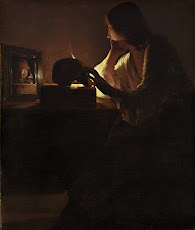Early Modern Art: The Influence of Innovations on Art - Art Deco
%20_%20_Modes%20d'Hiver__%20Cover%20Design%20for%20_Harper's%20Bazar_%20_%20The%20Metropolitan%20Museum%20of%20Art.jpg)
Art Deco The Art Deco style is the direct result of innovations and trends toward nonconventional means of art production. Art Deco is a very popular style to this day and is very recognizable. Largely the movement has roots in industry and design, with many of the pieces from the style being mass produced and sold. Often pieces from the movement are designs rather than singular titular pieces due to the nature of the innovations and production of the time. Art Deco has a few consistent features across the majority of it's works. The movement's nature was initially experimental but grew consistently into patterns and geometric designs. These geometric features and repeating patterns can be seen in all of the following pieces from inspirational Art Deco artists. Modes D'Hiver by Erte in Paris, 1921 Romain de Tirtoff, a Russian born French illustrator, was better known by his alias of Erte and was very influential on the Art Deco movement in Paris. Initially Erte moved to ...





